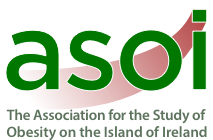Porphyromonas gingivalis (W83) Infection Induces Alzheimer’s Disease-Like Pathophysiology in Obese and Diabetic Mice
- Categories: Animal Studies, Basic Science, Older Adults
Type Article
Journal Article
Authors
B. Bahar; S. Kanagasingam; M. M. Tambuwala; A. A. A. Aljabali; S. A. Dillon; S. Doaei; R. Welbury; S. S. Chukkapalli; S. K. Singhrao
Year of publication
2021
Publication/Journal
J Alzheimers Dis
Volume
82
Issue
3
Pages
1259-1275
Abstract
BACKGROUND: Periodontal disease(s) and metabolic illnesses negatively impact the quality of life and, eventually mental health. OBJECTIVE: This study investigated the effect of Porphyromonas gingivalis (W83) oral infection on the development of Alzheimer's disease (AD) pathophysiology in a wild-type obese, diabetic (db/db) mouse model. METHODS: The db/db mice were either orally infected with P. gingivalis and Fusobacterium nucleatum or sham infected for 16 weeks. The presence of amyloid-β (Aβ) and neurofibrillary tangles (NFTs) were assessed using a silver impregnation technique and subsequently by immunohistochemistry for tau and neuroinflammation. The mRNA abundance of a panel of 184 genes was performed using quantitative real-time PCR, and the differentially expressed genes were analyzed by Ingenuity Pathway Analysis. RESULTS: While no Aβ plaques and NFTs were evident by silver impregnation, immunohistochemistry (glial cell markers) of the P. gingivalis-infected mice tissue sections exhibited neuroinflammation in the form of reactive microglia and astrocytes. Anti-tau immunopositivity, in addition to cells, was prominent in thickened axons of hippocampal CA neurons. The mRNA abundance of crucial genes in the insulin signaling pathway (INSR, IGF1, IRS, IDE, PIK3R, SGK1, GYS, GSK3B, AKT1) were upregulated, potentially exacerbating insulin resistance in the brain by P. gingivalis oral infection. Increased mRNA abundance of several kinases, membrane receptors, transcription factors, and pro-inflammatory mediators indicated hyperactivation of intracellular cascades with potential for tau phosphorylation and Aβ release in the same infection group. CONCLUSION: P. gingivalis W83 infection of db/db mice provides a disease co-morbidity model with the potential to reproduce AD pathophysiology with induced periodontal disease.
